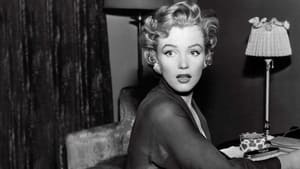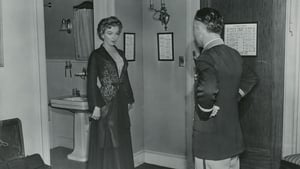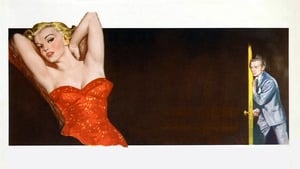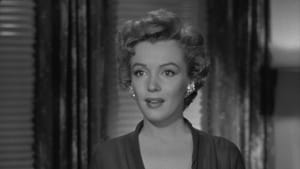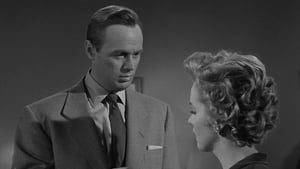Contact: [email protected]
Video Sources 0 Views
- Watch trailer
- Don't Bother to Knock

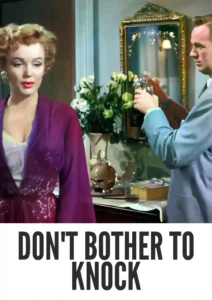
Synopsis
Table of Contents
ToggleReview: Don’t Bother to Knock (1952) – A Gripping Psychological Drama

Introduction
Don’t Bother to Knock, released in 1952, is a captivating psychological drama directed by Roy Ward Baker. Starring Marilyn Monroe, Richard Widmark, and Anne Bancroft, this film offers a compelling exploration of human nature and the darkness that lies within. In this review, we’ll delve into the suspenseful world of Don’t Bother to Knock and discuss the impact of its early colorized version on its atmospheric storytelling.
Check The Full Colorized Movies List
Check Our Colorized Movies Trailer Channel
Understanding Don’t Bother to Knock (1952): Director, Cast, and Genre
Directed by Roy Ward Baker, Don’t Bother to Knock features a talented cast including Marilyn Monroe, Richard Widmark, and Anne Bancroft. The film belongs to the psychological thriller genre, characterized by its tense atmosphere, morally ambiguous characters, and exploration of the human psyche.
Exploring the World of Don’t Bother to Knock (1952): Plot and Characters
Don’t Bother to Knock follows the story of Nell Forbes (Marilyn Monroe), a troubled young woman who takes a job as a babysitter in a New York City hotel. As Nell’s behavior becomes increasingly erratic and dangerous, she draws the attention of Jed Towers (Richard Widmark), a hotel guest with a troubled past. As the tension mounts and the stakes escalate, Nell and Jed are drawn into a dangerous game of cat and mouse that threatens to spiral out of control.
The Art of Film Colorization
While Don’t Bother to Knock was originally filmed in black and white, its early colorized version adds a new layer of depth to its atmospheric storytelling. The colorization process enhances the film’s moody lighting and evocative set design, heightening the sense of tension and suspense that permeates every frame.
Early Colored Films: A Brief History
The history of early colored films is marked by innovation and experimentation as filmmakers sought to enhance the visual appeal of their movies. From hand-tinted frames to groundbreaking technicolor processes, the evolution of colorization techniques transformed the cinematic landscape, offering audiences a new way to experience their favorite films.
Don’t Bother to Knock (1952) and Its Early Colored Version
The decision to release Don’t Bother to Knock in a colorized format was met with anticipation and excitement. While some purists may prefer the original black and white version, the early colorized edition of the film adds a new dimension to its atmospheric storytelling, immersing viewers in its moody ambiance and suspenseful narrative.
The Debate Over Film Colorization
The debate over film colorization continues to divide audiences and industry professionals alike. While some argue that colorization enhances the visual appeal of classic films and makes them more accessible to modern audiences, others maintain that it compromises the artistic integrity of the original work. As technology advances and filmmaking techniques evolve, the debate over colorization remains a topic of ongoing discussion within the film community.
Examining Don’t Bother to Knock (1952) as an Early Colored Film
Viewing Don’t Bother to Knock in its early colorized iteration offers audiences a fresh perspective on its atmospheric storytelling and nuanced performances. The colorization process adds visual richness to the film’s moody cinematography and expressive performances, heightening the sense of tension and suspense that pervades every scene.
Influence and Legacy: Don’t Bother to Knock (1952)’s Impact on Cinema
Don’t Bother to Knock is widely regarded as one of Marilyn Monroe’s most compelling performances and a classic example of the psychological thriller genre. Its gripping narrative, atmospheric cinematography, and intense performances have inspired generations of filmmakers and continue to captivate audiences around the world. As a testament to the enduring power of suspense, Don’t Bother to Knock remains a timeless classic that continues to thrill and enthrall audiences to this day.
Director’s Cinematic Legacy: Beyond Don’t Bother to Knock (1952)
Roy Ward Baker’s directorial legacy extends far beyond Don’t Bother to Knock, encompassing a diverse body of work that spans multiple genres and styles. As a filmmaker, Baker was known for his keen eye for detail, atmospheric storytelling, and ability to evoke powerful emotions from his audiences. Don’t Bother to Knock stands as a testament to his talent and creativity, cementing his status as one of the great directors of his time.
Themes Explored in Don’t Bother to Knock (1952)
At its core, Don’t Bother to Knock explores themes of identity, loneliness, and the darkness that lies within us all. Through its complex characters and suspenseful plot twists, the film delves into the dark recesses of the human psyche, revealing the fragile line between sanity and madness. Don’t Bother to Knock serves as a chilling reminder that danger can lurk behind even the most innocent facade.
Reception and Controversy Surrounding Don’t Bother to Knock (1952)
Upon its release, Don’t Bother to Knock received widespread critical acclaim for its gripping narrative, atmospheric cinematography, and powerhouse performances. However, the decision to release the film in a colorized format sparked debate among fans and critics alike. While some praised the colorization process for enhancing the film’s visual appeal, others questioned its necessity and expressed concern about preserving the integrity of Baker’s original vision.
Where to Watch Don’t Bother to Knock (1952) Online
For those eager to experience Don’t Bother to Knock for themselves, the film is readily available on popular streaming platforms such as Amazon Prime Video, Google Play Movies, and iTunes. Whether viewed in its original black and white format or its early colorized iteration, Don’t Bother to Knock offers a gripping and suspenseful cinematic experience that is sure to keep audiences on the edge of their seats.
FAQs About Don’t Bother to Knock (1952)
1. Is Don’t Bother to Knock based on a true story?
Don’t Bother to Knock is a work of fiction inspired by the suspenseful thrillers of the psychological thriller genre. While the film’s storyline is not based on a specific true story, it draws inspiration from the dark themes and atmospheric storytelling that characterize classic psychological thrillers.
2. Who directed Don’t Bother to Knock?
Don’t Bother to Knock was directed by Roy Ward Baker, a talented filmmaker known for his atmospheric storytelling and intense character dramas. Baker’s keen eye for detail and ability to create tension and suspense onscreen are evident throughout the film, making it a thrilling and unforgettable cinematic experience.
3. What is the central conflict of Don’t Bother to Knock?
At its core, Don’t Bother to Knock revolves around the central conflict between identity and deception. As the characters grapple with their own desires and fears, they must confront the darkness that lies within themselves and navigate the treacherous landscape of betrayal and deceit.
4. Why was Don’t Bother to Knock released in a colorized format?
The decision to release Don’t Bother to Knock in a colorized format was made with the intention of enhancing the film’s visual appeal and immersing audiences in its atmospheric storytelling. While some purists may prefer the original black and white version, the early colorized edition of Don’t Bother to Knock offers a fresh and vibrant interpretation of its suspenseful narrative and nuanced performances.
5. What is the legacy of Don’t Bother to Knock?
Don’t Bother to Knock is widely regarded as one of Marilyn Monroe’s most compelling performances and a classic example of the psychological thriller genre. Its gripping narrative, atmospheric cinematography, and intense performances have inspired generations of filmmakers and continue to captivate audiences around the world.
6. Are there any sequels or remakes of Don’t Bother to Knock?
No, there are no direct sequels or remakes of Don’t Bother to Knock. However, the film’s gripping narrative and intense performances have left an indelible mark on the psychological thriller genre, inspiring countless imitators and influencing the suspense thriller genre as a whole.
7. Where can I watch Don’t Bother to Knock online?
For those eager to experience Don’t Bother to Knock for themselves, the film is readily available on popular streaming platforms such as Amazon Prime Video, Google Play Movies, and iTunes. Whether viewed in its original black and white format or its early colorized iteration, Don’t Bother to Knock offers a gripping and suspenseful cinematic experience that is sure to keep audiences on the edge of their seats.
Conclusion
In conclusion, Don’t Bother to Knock remains a taut and suspenseful psychological drama that continues to captivate audiences with its gripping narrative and powerhouse performances. Whether viewed in its original black and white format or its early colorized iteration, Roy Ward Baker’s classic film offers a chilling exploration of the darkness that lies within us all. As viewers immerse themselves in the atmospheric world of Don’t Bother to Knock, they are reminded of the enduring power of suspense and the complexities of the human psyche.
